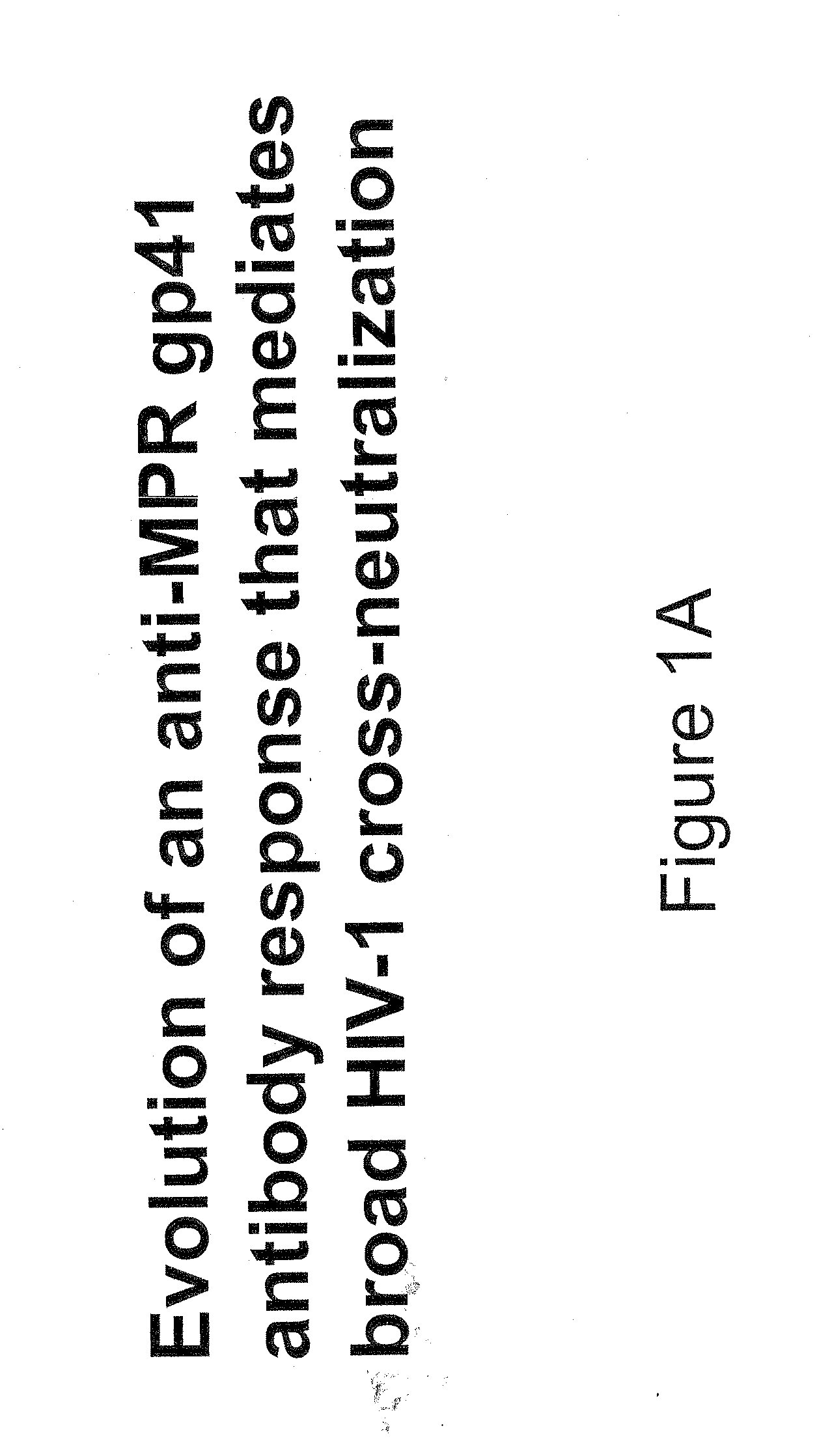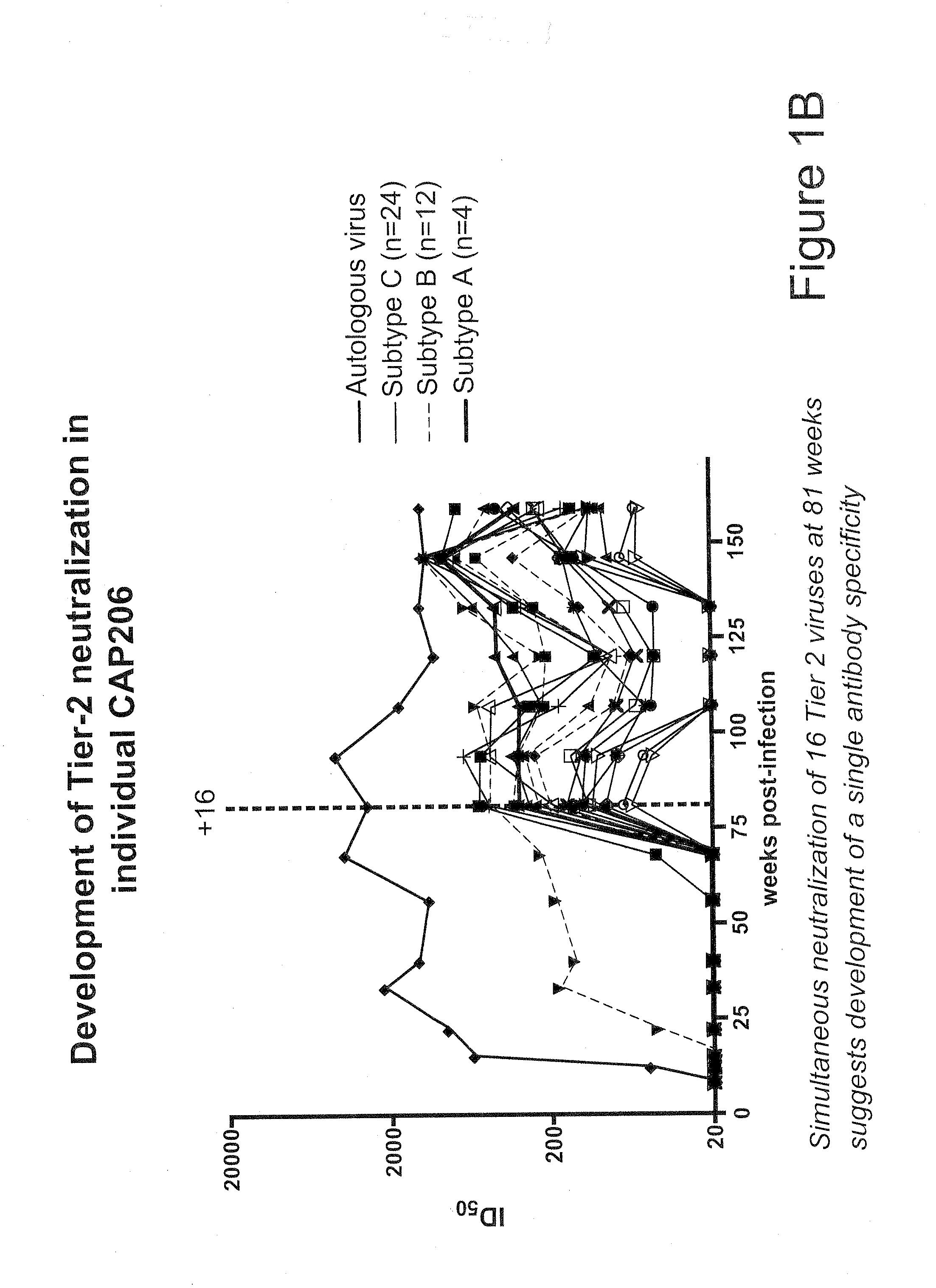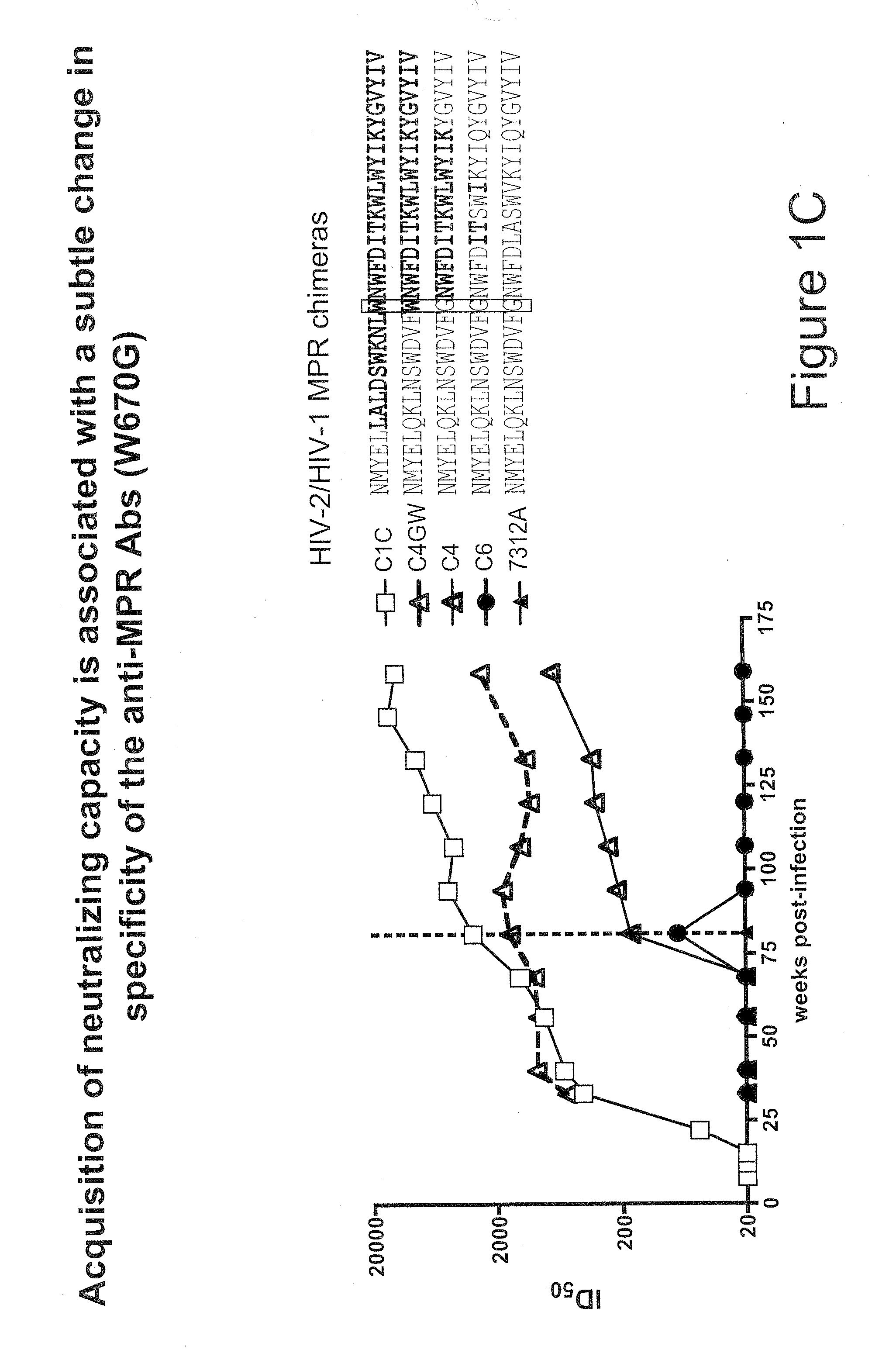Hiv-1 antibodies
- Summary
- Abstract
- Description
- Claims
- Application Information
AI Technical Summary
Benefits of technology
Problems solved by technology
Method used
Image
Examples
example 1
Experimental Details
[0043]Plasma Samples and Viruses.
[0044]Plasmas BB34, BB81, BB105, and SAC21 were from HIV-1-infected blood donors identified by the South African National Blood Service in Johannesburg. The BB samples were collected between 2002 and 2003 and have been described previously (Binley et al, J. Virol. 82:11651-11668 (2008), Gray et al, J. Virol. 83:8925-8937 (2009)). The SAC plasma samples are from a second blood donor cohort that was assembled using a similar approach. Briefly, aliquots from 105 HIV-1-infected blood donations made between 2005 and 2007 were screened in the BED assay to eliminate 29 incident infections. Eight samples neutralized the vesicular stomatitis virus G control pseudovirus and were excluded. SAC21 was among the remaining 68 aliquots that were tested against three subtype B and three subtype C primary viruses to identify those with neutralization breadth. The plasma sample CAP206 corresponded to the 3-year visit of an individual in the Centre f...
example 2
[0083]Tetramers were prepared as described in U.S. application Ser. No. 12 / 320,709, filed Feb. 2, 2009, using the biotinylated MPR.03 peptide (sequence below and in FIG. 2A) with both allophycocyanin (APC) and in PacificBlue labeled streptavidins. They were titered on antibody-coated beads and on antibody expressing cell lines.
Biotinylated MPR.03 peptidebiotin-KKKNEQELLELDKWASLWNWFDITNWLWYIRKKK
Additionally, non-fluorochrome-labeled (“cold”) tetramers were prepared by using unlabeled streptavidin. This material was used for assays to characterize the antibodies produced.
[0084]Excess biotinylated peptide (approximately 8:1 molar ratio of peptide to streptavidin for cold tetramers and 33:1 molar ratio of peptide to streptavidin for fluorochrome-labeled tetramers) was incubated at 4° C. overnight and was isolated using gel filtration on Micro BioSpin 30 columns (BioRad Laboratories, Hercules, Calif.) or by concentration and washing using a Centriprep 30,000Da MWCO concentrator (Millipor...
example 3
Experimental Details
[0117]Human Samples:
[0118]Stored plasma and PBMC from CAP206 an HIV-1 subtype C chronically infected individual were used for this study. This participant is part of the CAPRISA 002 Acute infection cohort whose antibody neutralization profile has been studied since the point of seroconversion (Gray et al, J. Virol. 81:6187-6196 (2007)). This study was approved by the IRB of the Universities of KwaZulu Natal and Witwatersrand in South Africa.
[0119]Reagents:
[0120]The MPR.03 peptide containing lysines at both ends for solubility (KKKNEQELLELDKWASLWNWFDITNWLWYIRKKK-biotin) and a scrambled peptide were used to generate tetramers. Other peptides (MPER656, SP62, SP400 and 4E10) and proteins (ConS gp140, JR-FL and gp41) were used in ELISAs and SPR experiments and have been described previously (Shen et al, J. Virol. 83:3617-3625 (2009)). 4E10 and 2F5 mAbs were used as controls. The CAP206.B5 transmitted / founder virus was cloned from an early plasma sample. Other viruses ...
PUM
| Property | Measurement | Unit |
|---|---|---|
| pH | aaaaa | aaaaa |
| pH | aaaaa | aaaaa |
| volume | aaaaa | aaaaa |
Abstract
Description
Claims
Application Information
 Login to View More
Login to View More - R&D
- Intellectual Property
- Life Sciences
- Materials
- Tech Scout
- Unparalleled Data Quality
- Higher Quality Content
- 60% Fewer Hallucinations
Browse by: Latest US Patents, China's latest patents, Technical Efficacy Thesaurus, Application Domain, Technology Topic, Popular Technical Reports.
© 2025 PatSnap. All rights reserved.Legal|Privacy policy|Modern Slavery Act Transparency Statement|Sitemap|About US| Contact US: help@patsnap.com



